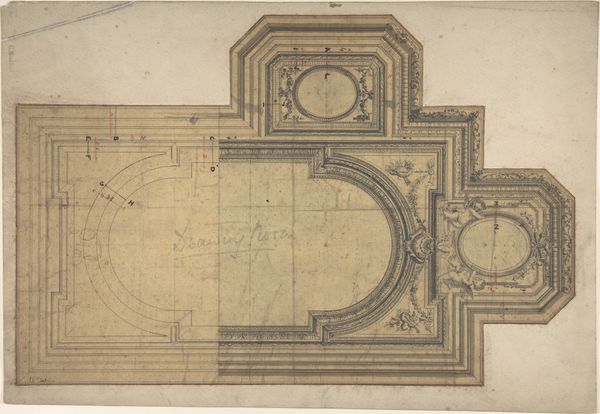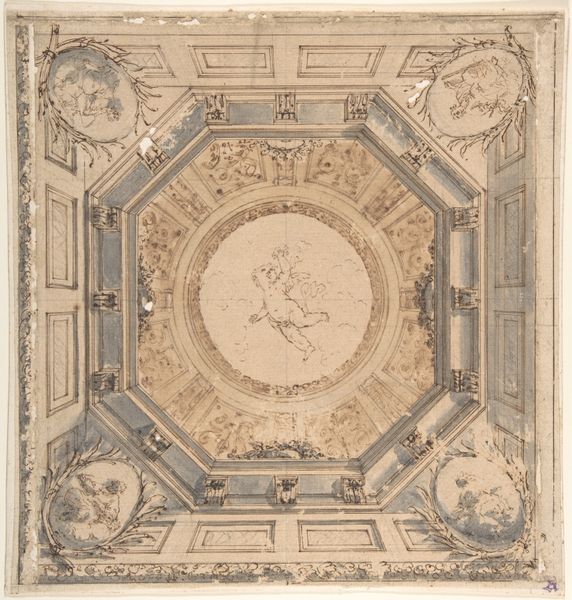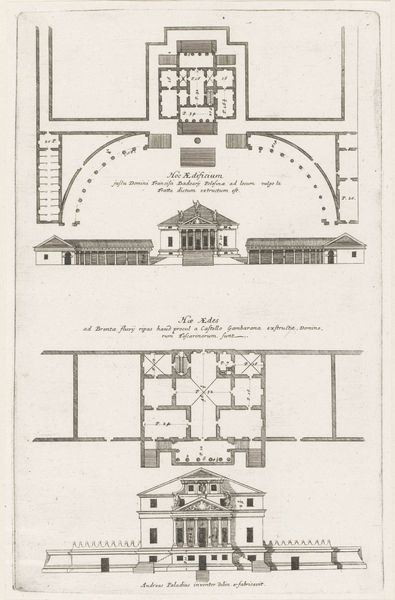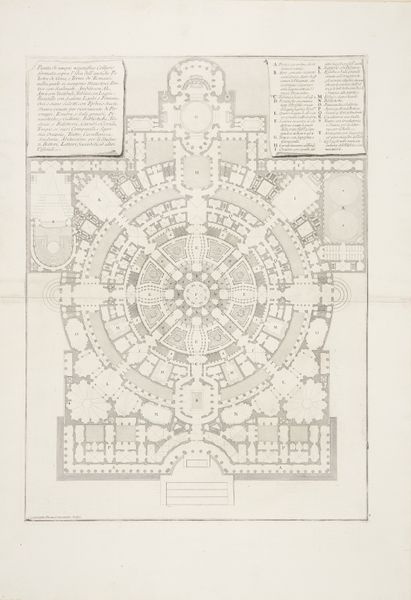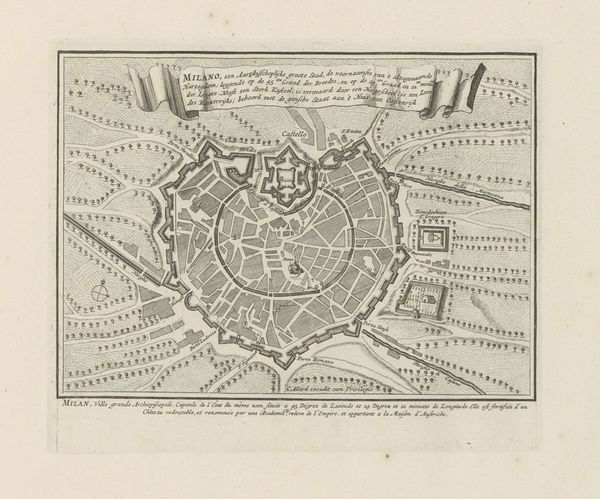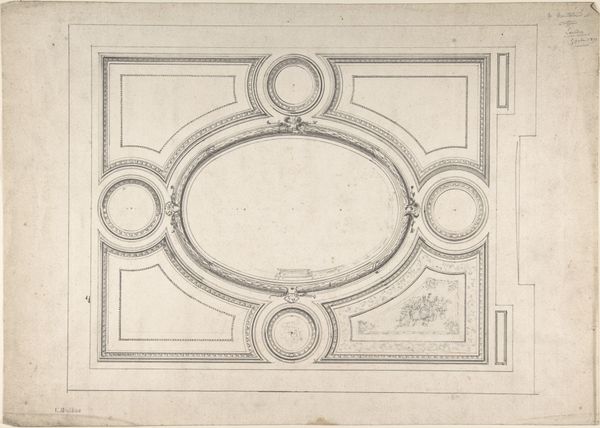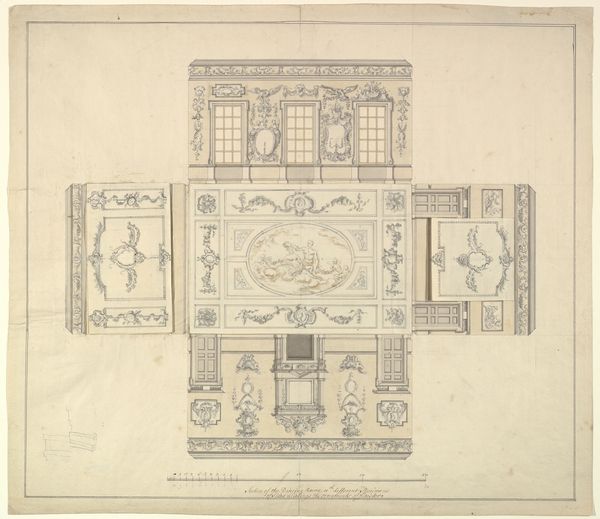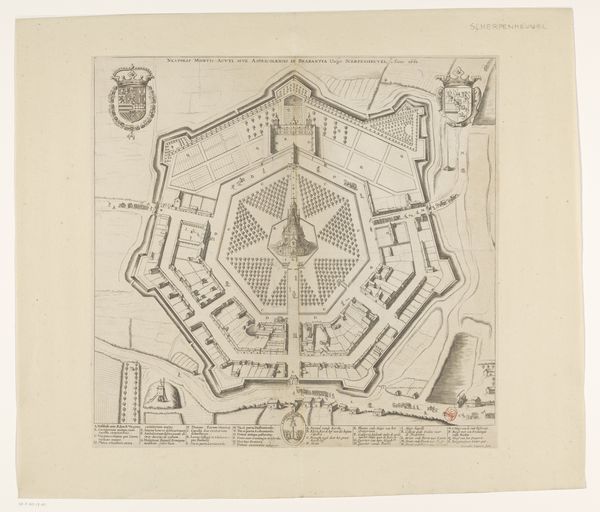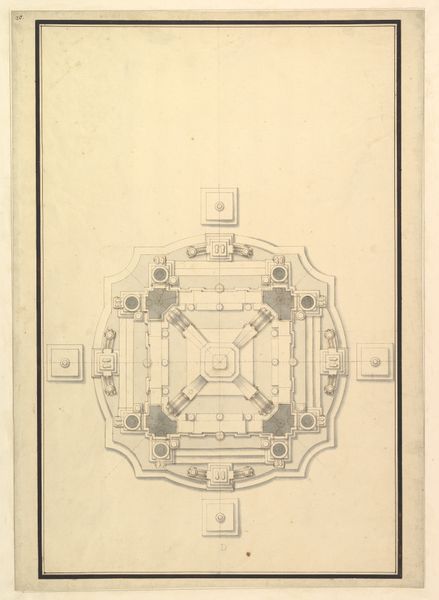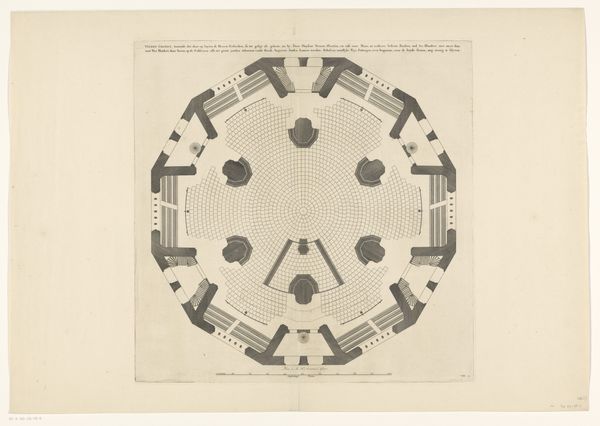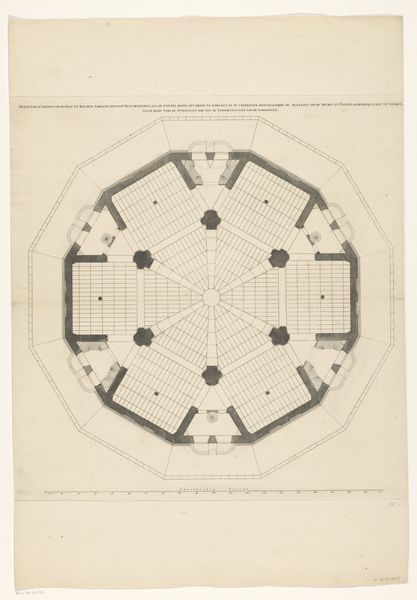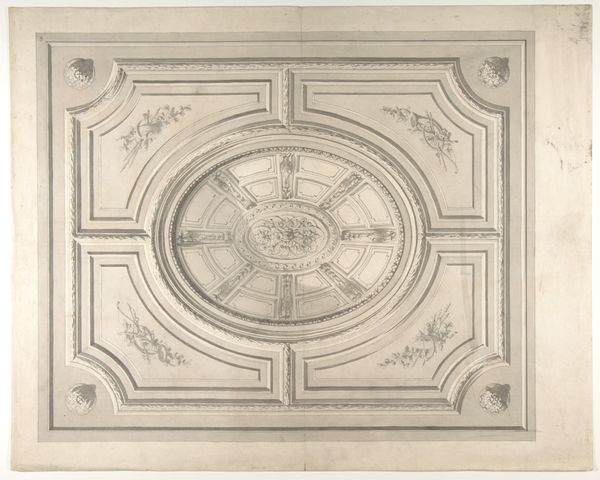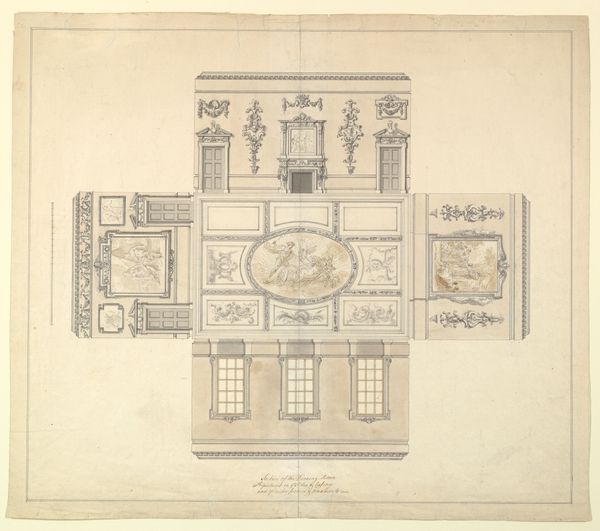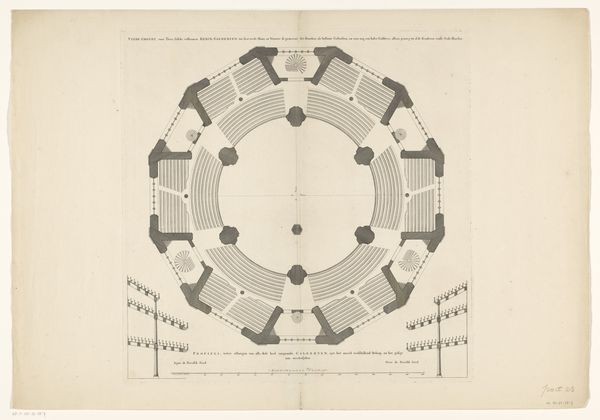
drawing, print, engraving, architecture
#
drawing
#
aged paper
#
toned paper
#
homemade paper
#
dutch-golden-age
# print
#
old engraving style
#
hand drawn type
#
geometric
#
stylized text
#
cityscape
#
golden font
#
defined shading
#
heavy shading
#
engraving
#
architecture
#
historical font
Dimensions: height 437 mm, width 759 mm
Copyright: Rijks Museum: Open Domain
Curator: The artwork before us, dating back to 1661, is titled "Plattegrond van de Burgerzaal in het Stadhuis op de Dam," or "Floor Plan of the Citizen's Hall in the Town Hall on the Dam." Dancker Danckerts is credited with its creation, and we see it manifested through drawing and engraving on paper. It’s currently held at the Rijksmuseum. Editor: My first thought is it’s a fascinating bird's-eye view, like some kind of godly Google Maps before Google! There’s something mesmerizing about the rigid lines and almost mathematical precision. It's a real feat of draftsmanship. Curator: Absolutely. Floor plans like these held significant civic importance. Beyond merely documenting architectural space, they served as symbolic representations of the ideals and power structures embedded in the building’s design and function within Amsterdam society. Editor: So, it's not just a map—it’s a statement. All those straight lines, they feel so...controlled. Were they trying to project order in a chaotic world? Because those central globes, flanking what looks like the zodiac, that definitely says, "we understand the world, inside and out". Curator: In a way, yes. This hall was the center of Amsterdam’s administrative and judicial life. The globes signify the reach of the city's trading power. It projects not just understanding but control and domination in global trade. Remember that this was the golden age and this symbolism had resonance. Editor: Ah, so those beautiful hand-drawn fonts beneath the floor plan - "De Groote en Vloer vande Borger Zaal" must highlight those aspects in relation to its importance. Knowing that definitely paints those austere geometric patterns in a different light; you almost get sea sickness staring too long, imagining the wealth and, the power sailing the oceans. There's beauty here but it is a cool kind of beauty. Curator: Precisely. Understanding the political and economic climate of Amsterdam during that time allows us to see past the technical artistry. In fact, these detailed engravings like this informed everything from city planning, ceremonial uses of these spaces, and trade policies. Editor: I see it. Looking at it now, the entire piece resonates with a certain, icy confidence of empire building. Still an astounding piece from an aesthetic perspective, once you’ve factored in all that historical and societal baggage. It sort of shifts from architectural sketch into almost...propaganda, in its own subtle, precise way. Curator: A wonderful thought to conclude with! Hopefully we were able to provide listeners a peek into not only the layout of the hall, but also the conceptual and contextual architecture surrounding it as well.
Comments
No comments
Be the first to comment and join the conversation on the ultimate creative platform.
